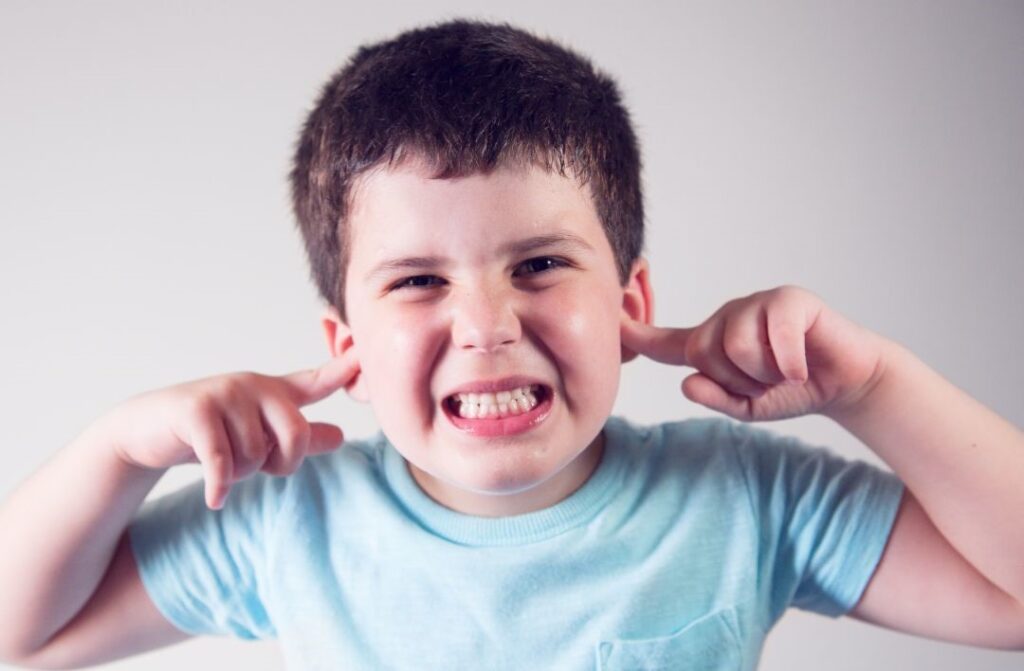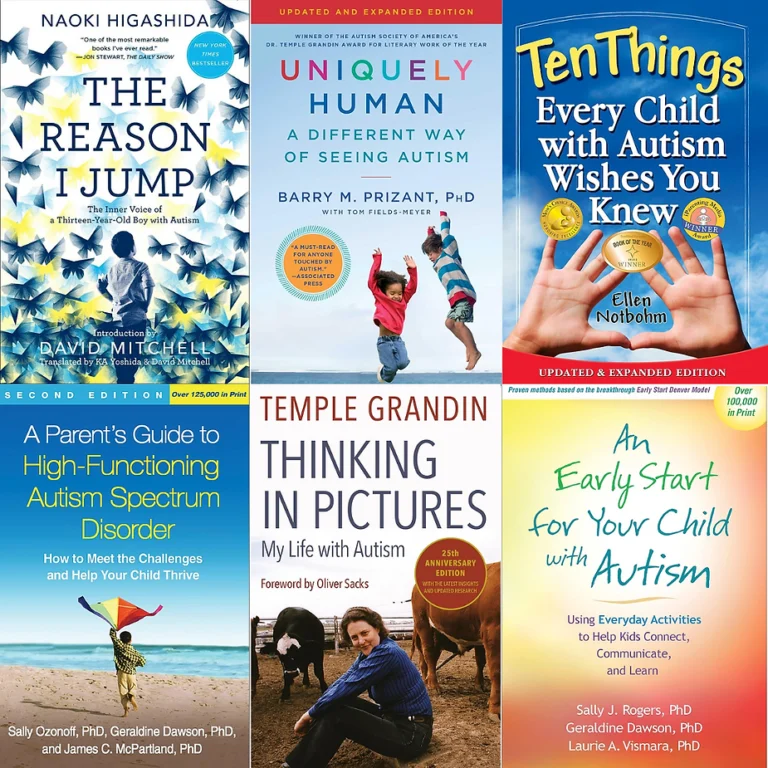Common Warning Signs Of Sensory Processing Disorder In Kids

Discover the common signs of Sensory Processing Disorder that can help you recognize if your little one is experiencing sensory challenges.
This post may contain affiliate links and I could earn a small commission at no cost to you. However, I will never recommend anything that I do not believe in or use myself. You can read more about my disclosure policy here.
One in six children experiences sensory processing challenges—that’s a staggering number. If you’re navigating this world, it can feel overwhelming, but understanding is your first step toward helping your child thrive.
Sensory processing disorder (SPD) can show up in unexpected ways. Maybe your child covers their ears at everyday noises or refuses certain foods with a passion that puzzles you. Or perhaps they’re constantly on the move, crashing into furniture or people. These aren’t quirks—they’re signs of SPD, and knowing how to spot them is crucial.
In this post, we’ll break down the most common signs of Sensory Processing Disorder in kids. By the end, you’ll have a clear sense of what to watch for and, more importantly, actionable steps to support your child. Let’s dig in.
What is Sensory Processing Disorder (SPD)?
Children with sensory processing disorder have problems processing sensory information, making it hard for them to respond to that information in the right way.
Whether it’s touch, movement, smell, taste, sight, or sound, Sensory Processing Disorder can make it hard for kids to interpret and respond to the world around them.
This can lead to some pretty big challenges in day-to-day life.
What Causes Sensory Processing Disorder (SPD)?
The exact reasons why some kids develop Sensory Processing Disorder aren’t fully understood. While Sensory Processing Disorder is common in kids with Autism Spectrum Disorder (ASD), Attention Deficit Hyperactivity Disorder (ADHD), and other developmental conditions, it can also show up on its own.
What Are the Symptoms of Sensory Processing Disorder (SPD)?
Kids with Sensory Processing Disorder might react to sensory input in ways that seem extreme. Some are hypersensitive, meaning they’re easily overwhelmed by things like loud noises, certain textures, or bright lights. Others are hyposensitive, so they might constantly seek out intense sensory experiences like spinning or crashing into things.
Examples of Hypersensitivity
- Overreacts to loud noises or strong smells.
- Dislikes certain fabrics or textures (think itchy tags or scratchy clothes).
- Struggles with physical touch or being too close to others.
- Is fearful of heights or certain playground equipment.
- Experiences sensory overload that can lead to meltdowns or wanting to be alone.
Examples of Hyposensitivity
- Always seeking physical touch or movement.
- Has a high pain tolerance, sometimes leading to risky behavior.
- Often appears clumsy, with frequent bumps and falls.
- Craves intense sensory experiences like jumping, spinning, or crashing into things.
Common Warning Signs Of Sensory Processing Disorder In Children
1. High Pain Threshold
Children with Sensory Processing Disorder might not react to pain in the way you’d expect. They might fall or bump into something and barely flinch, which can be surprising and a bit worrisome. This high pain threshold can lead to more accidents since they might not feel the need to be as cautious.
2. Being Touched or Hugged
Some kids with sensory processing issues might shy away from touch. They may find hugs or even a gentle touch overwhelming or uncomfortable. It’s not that they don’t want affection—they just experience it differently.
3. Easily Distracted
Does your child get distracted by every little thing? Kids with Sensory Processing Disorder often have trouble focusing because their brains are constantly processing sensory input. That ticking clock or flickering light might be impossible for them to ignore, making it hard to concentrate on tasks.
Related: 20 Of The Best Classroom Sensory Tools And Quiet Fidget Toys
4. Chewing on Non-Food Items
Chewing on non-food items, like clothing or pencils, can be a way for kids with sensory issues to get the oral sensory input they need. It might seem odd, but it’s a common behavior for kids who crave more sensory stimulation.
5. Extremely Picky Eating
Mealtime can be a challenge if your child is extremely picky about what they eat. It’s not just about flavor—textures, smells, and even the appearance of food can be overwhelming for kids with Sensory Processing Disorder. They might stick to a few “safe” foods, making it tricky to introduce new things.
6. Being Easily Startled by Sudden Noises
A sudden loud noise—a door slamming, a dog barking—can make your child jump out of their skin. They’re not just being dramatic; their nervous system is on high alert, making them more sensitive to surprises.
7. Sensitivity to Sounds
Everyday sounds that most people barely notice—like the hum of the refrigerator or the buzz of a fluorescent light—can be overwhelming for a child with sensory issues. They might cover their ears to block out noises that seem unbearably loud to them.
8. Covering Ears or Eyes
Speaking of covering ears, you might notice your child doing this frequently, especially in noisy or bright environments. They might also shield their eyes from bright lights, even if the lighting seems normal to others.
9. Sensitivity to Smells
Some kids with Sensory Processing Disorder have an incredibly sharp sense of smell. They might react strongly to scents that others don’t even notice, like someone’s perfume or the smell of certain foods. This can make being in certain environments really challenging for them.
10. Touching Things
Kids with Sensory Processing Disorder might have an irresistible urge to touch everything. They’re seeking out different textures and sensations, trying to get the sensory input they need to feel balanced.
11. Dislikes Getting Messy
Finger paints, mud, and even sticky foods might be a no-go for your child if they have sensory issues. The feeling of something messy on their hands or body can be too much for them to handle.
12. Experiencing Muted Sights, Sounds, and Touch
On the flip side, some kids with Sensory Processing Disorder might experience the world as if everything is dialed down. Sounds, sights, and even touch might feel muted or dull to them, leading them to seek out more intense sensory experiences.
13. Trouble with Balance
Balance issues are common in children with Sensory Processing Disorder. They might seem unsteady on their feet or have trouble with activities that require good coordination, like riding a bike or even walking in a straight line.
14. Poor Motor Coordination
Children with Sensory Processing Disorder might have trouble with motor coordination, making activities like catching a ball or tying shoelaces more difficult than they should be. They might avoid these tasks out of frustration or embarrassment.
15. Uneasiness with Movement
Whether it’s swinging at the playground or riding in the car, your child might seem uneasy with movement. They could be hypersensitive to the sensation of motion, making them avoid activities that involve it.
16. Problems Recognizing Personal Space
Kids with Sensory Processing Disorder might struggle with the concept of personal space. They could stand too close to others or accidentally bump into people, not realizing they’re doing it. It’s not intentional; it’s just hard for them to judge where their body is in relation to others.
17. Crashing into People and Things
If your child is constantly bumping into things or people, it could be a sign of Sensory Processing Disorder. They might not have a good sense of their own body in space, leading to more frequent accidents and collisions.
Similar to crashing into people, your child might bump into objects more often than other kids. They might misjudge distances or not be aware of their surroundings, leading to more frequent bumps and bruises.
18. Fear of Crowds
Crowds can be overwhelming for anyone, but for a child with Sensory Processing Disorder, they can be downright terrifying. The noise, the movement, and the sheer number of people can cause a sensory overload, making them want to escape the situation.
19. Becomes Easily Overstimulated in Group Settings
Group settings, like birthday parties or school assemblies, can be too much for a child with sensory issues. The noise, the people, and the activity can lead to overstimulation, causing them to act out or withdraw.
20. Rocking and Swaying
You might notice your child rocking back and forth or swaying side to side when they’re trying to calm down or focus. This self-soothing behavior is a common way for kids with Sensory Processing Disorder to manage their sensory input.
21. Frequent Feelings of Sensory Overload
You might notice your child becoming overwhelmed in situations that seem perfectly normal to others. This sensory overload can cause them to shut down, act out, or retreat to a quiet space.
Related: How to Create a Calm Down Corner for Autism
22. Behavior Problems
Sometimes, sensory overload can lead to behavior problems. Your child might have meltdowns, act out, or seem defiant when they’re really just overwhelmed by their sensory environment.
Related: How to Calm Autistic Meltdowns: 7 Tips that Work
23. High Activity Levels
Kids with sensory issues might be constantly on the go, seeking out movement and activity to regulate their sensory systems. They might seem hyperactive or restless, always needing to be in motion.
How Is Sensory Processing Disorder Diagnosed?
Getting a Sensory Processing Disorder diagnosis usually involves a detailed evaluation by specialists like pediatricians, psychologists, or occupational therapists (OTs). The specialist will look at how your child responds to sensory stimuli, their motor skills, and coordination to determine if Sensory Processing Disorder is the cause of their challenges.
What Are the Treatment Options?
At home, creating a sensory-friendly environment can make a big difference—think soft lighting, reducing noise, and providing the right sensory activities.
A personalized “sensory diet,” which includes activities tailored to your child’s needs like sensory play, sensory bins, listening to calming sounds, or playing with textured objects, can also be incredibly supportive.
Professional treatment often involves Sensory Integration Therapy, a type of occupational therapy designed to help kids better manage their sensory responses. This could include activities like deep pressure touch, swinging, or playing with heavy objects, all aimed at helping the child get used to sensory input and respond more appropriately.
Related: How to Create a Sensory Diet for Kids with SPD
Final Thoughts
If any of these signs sound familiar, it’s important to remember that you’re not alone, and there are ways to help your child navigate their sensory world. Understanding the signs of sensory processing disorder is the first step in finding the support and strategies that can make life a little easier for both you and your child.
Recommended
- How to Create a Sensory Diet for Kids with SPD
- Why Sensory Play Is Important For Child Development
- Sensory Bin Supplies: What You Need To Have
- 25 Ways Life Looks Different Parenting an Autistic Child






